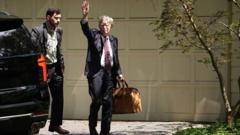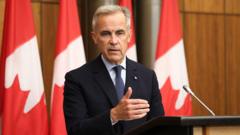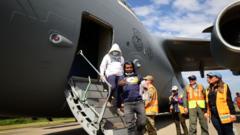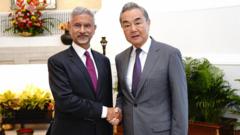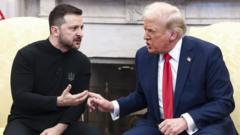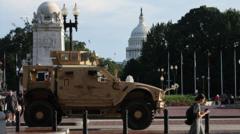Nike's forthcoming price adjustments occur against a backdrop of ongoing tariff-related uncertainties, with implications for consumer spending and the wider market.
Nike Sets to Increase Prices Amidst Tariff Uncertainties

Nike Sets to Increase Prices Amidst Tariff Uncertainties
Nike plans to hike prices on trainers and apparel in the US beginning in June, echoing rival Adidas' concerns surrounding tariffs.
Nike's strategic price increases, effective June 1, will primarily affect trainers over $100 and select clothing items, while also signaling broader industry challenges related to US tariff policies.
Nike is poised to raise prices on certain shoes and apparel starting June 1, a move following Adidas’ recent announcement regarding potential price hikes due to ongoing tariff uncertainties imposed by the Trump administration. Although Nike did not explicitly cite tariffs as the rationale for these increases, it acknowledged that pricing is adjusted regularly as part of strategic planning.
Most of Nike's production is based in Asia, particularly in Vietnam, a country among those targeted by US tariffs. The current trade environment is marked by a 10% base tariff on a range of imported products, and while additional reciprocal tariffs have been temporarily paused until July, considerable uncertainty remains concerning their potential reinstatement.
Nike's price adjustments will see increases of up to $10 on footwear priced over $100, and clothing and equipment will incur additional costs ranging from $2 to $10. However, popular models like Air Force 1 trainers and various children’s items will not be affected by the hikes.
Previously, Adidas reported similar risks regarding the price of its products, naming specific trainers that could see heightened costs due to tariffs. In addition, UK sports retailer JD Sports voiced concerns about potential drops in consumer demand as a result of higher price points arising from these tariffs.
The tariffs imposed by the Trump administration have sparked a debate across corporate America as companies navigate these changes. The president has publicly expressed skepticism regarding claims that tariffs compel firms to raise prices, directing companies like Mattel and Walmart to "absorb" the costs instead.
Nike’s finance chief, Matt Friend, has noted the company is contending with numerous external factors influencing consumer behavior, emphasizing that adjustments to pricing are a standard component of their operational strategy.
In a strategic pivot, Nike announced it would resume selling products directly through Amazon, reversing a six-year absence from the platform. This decision follows a noticeable decline in online sales across various regions, with Europe experiencing a 25% drop and Greater China reflecting a 20% downturn.
As the company’s revenue continues to decline, Nike is undergoing a leadership change, bringing back former executive Elliott Hill to spearhead a turnaround effort primarily focused on revitalizing its performance in key markets like the US, UK, and China.
Nike is poised to raise prices on certain shoes and apparel starting June 1, a move following Adidas’ recent announcement regarding potential price hikes due to ongoing tariff uncertainties imposed by the Trump administration. Although Nike did not explicitly cite tariffs as the rationale for these increases, it acknowledged that pricing is adjusted regularly as part of strategic planning.
Most of Nike's production is based in Asia, particularly in Vietnam, a country among those targeted by US tariffs. The current trade environment is marked by a 10% base tariff on a range of imported products, and while additional reciprocal tariffs have been temporarily paused until July, considerable uncertainty remains concerning their potential reinstatement.
Nike's price adjustments will see increases of up to $10 on footwear priced over $100, and clothing and equipment will incur additional costs ranging from $2 to $10. However, popular models like Air Force 1 trainers and various children’s items will not be affected by the hikes.
Previously, Adidas reported similar risks regarding the price of its products, naming specific trainers that could see heightened costs due to tariffs. In addition, UK sports retailer JD Sports voiced concerns about potential drops in consumer demand as a result of higher price points arising from these tariffs.
The tariffs imposed by the Trump administration have sparked a debate across corporate America as companies navigate these changes. The president has publicly expressed skepticism regarding claims that tariffs compel firms to raise prices, directing companies like Mattel and Walmart to "absorb" the costs instead.
Nike’s finance chief, Matt Friend, has noted the company is contending with numerous external factors influencing consumer behavior, emphasizing that adjustments to pricing are a standard component of their operational strategy.
In a strategic pivot, Nike announced it would resume selling products directly through Amazon, reversing a six-year absence from the platform. This decision follows a noticeable decline in online sales across various regions, with Europe experiencing a 25% drop and Greater China reflecting a 20% downturn.
As the company’s revenue continues to decline, Nike is undergoing a leadership change, bringing back former executive Elliott Hill to spearhead a turnaround effort primarily focused on revitalizing its performance in key markets like the US, UK, and China.


